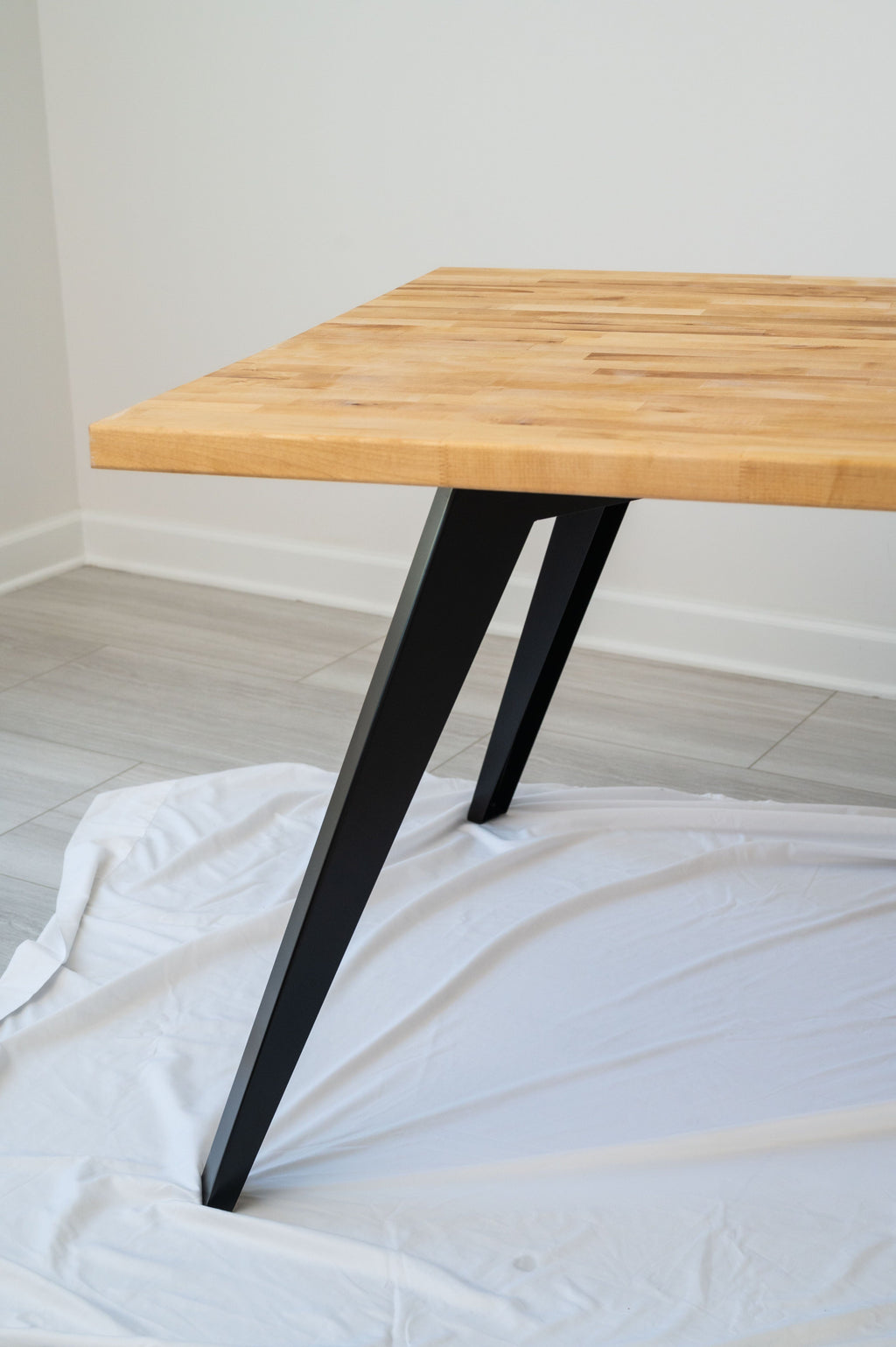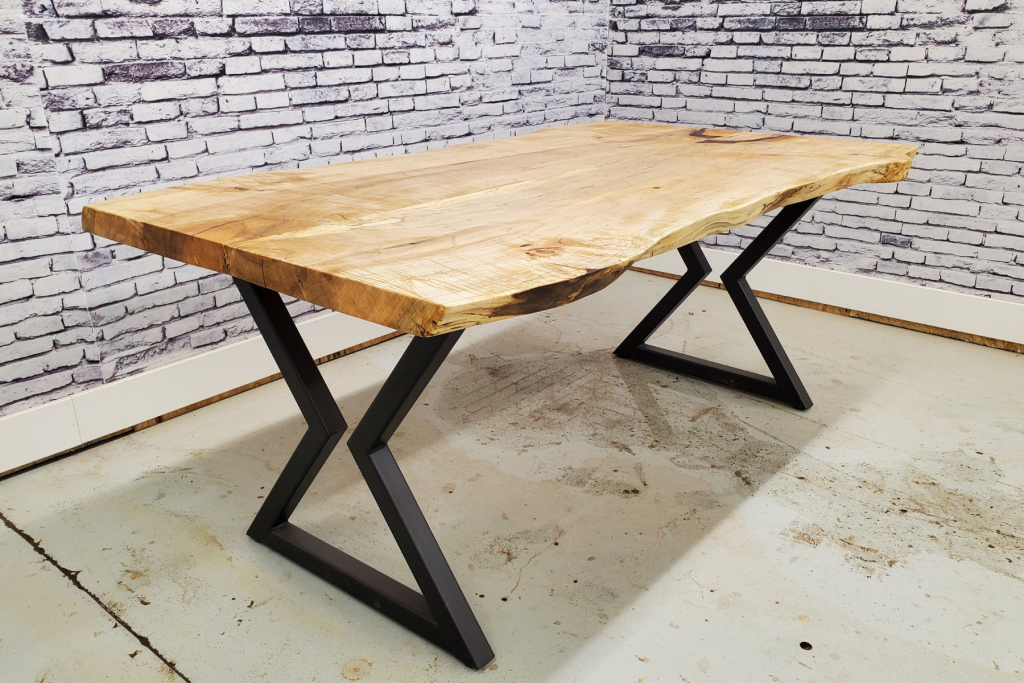Bring Warmth and Character to Your Room with Dining Table Legs Wood
Bring Warmth and Character to Your Room with Dining Table Legs Wood
Blog Article
Discovering the Various Sorts Of Table Legs Wood for Your Eating Room
The option of eating table legs wood can profoundly affect both the practical and aesthetic high qualities of your dining area. Solid wood choices, such as oak and walnut, give a traditional look with unequaled longevity, while crafted timber choices offer ingenious styles that resemble the richness of all-natural grains.
Solid Timber Options

In addition, solid wood is renowned for its toughness and longevity. Unlike crafted products, strong wood is less prone to warping and damage gradually when effectively maintained. This makes it an optimal selection for families or those that often hold events. Each item of solid wood is one-of-a-kind, showcasing individual characteristics that add to the appeal and character of the eating table.
Furthermore, solid timber can be ended up in various methods, varying from all-natural oils to discolored finishes, allowing house owners to customize their furnishings to match their style. In recap, selecting strong timber for dining table legs not only makes certain structural honesty however likewise improves the visual appeal of the dining location, making it a worthwhile investment for any type of home.
Engineered Timber Alternatives

Plywood, constructed from multiple layers of timber veneer, is especially solid and stable, making it an excellent selection for dining table legs. Its layered composition permits it to hold up against adjustments in moisture and temperature much better than typical strong timber. MDF, on the other hand, offers a smooth surface for paint or veneering, making it possible for developers to accomplish a refined look while keeping architectural honesty.
When choosing engineered timber alternatives, it is crucial to consider the desired usage and wanted visual. These materials not only enhance the functionality of dining areas yet also allow for higher layout adaptability, making certain that contemporary and conventional designs can coexist sympathetically.
Reclaimed Wood Includes
Redeemed wood provides an one-of-a-kind mix of sustainability and character, making it a significantly prominent choice for dining table legs. Sourced from old barns, factories, and various other frameworks, recovered timber personifies a history that new materials just can not duplicate. Each item lugs its own story, marked by distinct blemishes, knots, and varying grain patterns, which add to a table's distinct visual appeal.
Along with its aesthetic beauty, redeemed wood is an eco-friendly alternative. By repurposing formerly utilized materials, it reduces the demand for new lumber, therefore assisting to conserve forests and reduce waste. This aligns with an expanding consumer choice for lasting practices in furniture.
Furthermore, redeemed timber is typically much more long lasting than freshly collected timber because of its age. The all-natural drying procedure that redeemed wood goes through outcomes in a denser and stronger material, making it much less vulnerable to warping and splitting. This enhances the durability of dining tables, allowing them to withstand the roughness of everyday use.
Softwood vs. Hardwood
When choosing dining table legs, recognizing the differences in between softwood and hardwood is critical for achieving both aesthetic and practical objectives. They usually display an even more rustic appearance, making them appropriate for informal or country-style dining spaces.
On the various other hand, woods, sourced from deciduous trees like oak, cherry, and maple, are renowned for their density, stamina, and resilience. The elaborate grain patterns and abundant shades of woods supply a ageless and sophisticated charm, making them perfect for formal dining setups. While woods have a tendency to be more costly and much heavier, their strength against wear and tear usually validates the financial investment.
Inevitably, the selection in between softwood and hardwood for dining table legs must align with your style vision, usage requirements, and budget, making certain that your dining area mirrors your individual design while staying useful gradually.

Treatments and finishes
The visual charm and durability of table legs can be substantially boosted through different finishes and treatments. These processes not only shield the wood from damages however also why not find out more elevate its appearance, permitting it to enhance diverse indoor styles.
One usual treatment is tarnishing, which passes through the wood and boosts its natural grain while including color. Spots give an abundant, classy appearance, allowing house owners to match their furniture with existing style. Alternatively, clear finishes such as polyurethane or varnish create a safety layer without altering the wood's initial color, ensuring sturdiness against deterioration.
Additionally, all-natural oils, like tung or linseed oil, nurture the wood and use a refined shine, all while being environmentally friendly. These oils permit the surface to take a breath, protecting against moisture accumulation and possible bending.
For those looking for a rustic appeal, weathered or troubled surfaces can be applied to produce an aged appearance, adding character to the item. Inevitably, the choice of surfaces and therapies relies on individual preference, preferred visual appeals, and the details wood kind, making it vital to take into consideration these factors when selecting table legs for your area.
Verdict
Solid timbers, engineered choices, and reclaimed options each deal unique benefits, catering to various choices and anchor requirements. Ultimately, the option of timber type should line up with desired style, durability, and environmental factors to consider, improving the overall dining experience.
The choice of dining table legs wood can profoundly impact both the practical and aesthetic high qualities of your dining space - Dining Table Legs Wood. Strong timber options, such as oak and walnut, give a timeless look with unequaled longevity, while engineered timber options offer innovative styles that imitate the richness of natural grains. Strong timber supplies a classic quality that can raise the general style of an eating space. click to read Each piece of solid wood is distinct, showcasing individual qualities that include to the charm and personality of the dining table
Moreover, recovered wood is typically much more durable than freshly collected wood due to its age.
Report this page